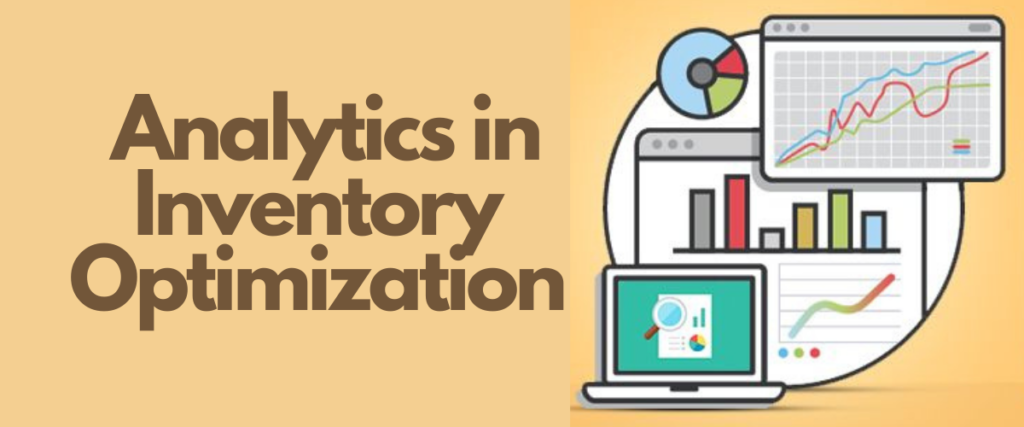There is a saying suiting best to our today’s topic. What you don’t measure, you can’t improve. Inventory management is one of the most top points of e-commerce. Poorly managed inventory results in business loss. Over time, this becomes a reason for very low turnover. As a result of stock-outs, retailers face problems. E.g., backorders, sale-related losses, and not satisfied customers. So, what to do? It’s very tough to find the balance. But the impact of analytics is a vital revenue stamp. That’s why in this article, we will focus on it. Let’s view it mainly as an enhancing inventory optimization tool. The one that is very important for retailers.

Why do We Need Analytics in Inventory Optimization?
Inventory management is a challenge. It is equal both to manufacturers and distributors. Every supply chain issue can become a pitfall. For example, there can be a product turnover decrease, loss of profit. Also, there can be stock-out, backorders. All the negative effects lead to problems. The most serious problems are mainly unhappy customers and lost sales.
Thus, inventory optimization in the supply chain makes sure to have the presence of the right products. One good technique is multi-echelon inventory management. It can be used to reach success. And most importantly, so that they are available at the right time in the right quantities. And they should be wherever they are meant to be. As a result, companies optimizing their inventory reduce their stock levels. And they also avoid carrying costs or out-of-date inventory.
As for performance analytics, it is of a significant role in stock optimisation. It helps manufacturers determine their stocking targets. And also, analytics can help optimize your website and the business. The 2 main areas to apply analytics relate to inventory surplus and stock-outs.

Inventory Surplus
A surplus shows the resource amount exceeding the amount of actively used ones. It can refer to the income, profit or inventory. In the case of inventories, a surplus describes products that keep staying non-purchased in the course of time.
For manufacturing and distribution businesses, the insights from the analytics in internal control of inventory can help them do better planning.
The main metrics to look at are the followings:
- Sales to Inventory ratio,
- Days of inventory,
- Total inventory,
- Gross margin return on inventory.
Inventory optimization based on insights from these metrics can help businesses support a stronger balance between supply and demand variability. It is often implemented with immediately noticeable results. This is particularly true for distributors that have a significant amount of working capital in inventory. For them, even minor improvements in inventory planning can have a considerable impact on cash.
Out-of-Stock
Stock-outs are also a real challenge for supply chain businesses. The role of analytics should not be underestimated because, most importantly, they reduce stock-outs. Right metrics should be measured overall the company.
What is Analytics in Inventory Optimization?
Analytics offers data that helps when planning and making marketing strategies. A good marketing strategy actually means a lot more than just surface planning. It goes beyond page views on the website. An essential tool is various channel integration. And this should be done in the most efficient way. And here, you should take into account all the data from multiple sources. From the marketing point of view, it is all about blogs, emails, social media etc. All this will add personalization and improve your customer experience.
After you got various channels in one place, you can analyze them. All the data regarding those channels can be verified more easily. The full info regarding vendors, partners and clients become available as well. As for the sales, such information helps to understand inventory trends and bestsellers, which in turn comes to figure out better insights in future issues identification.
Analytical Algorithms in Inventory Optimization
Algorithms are one of the most helpful systems. They have been thought out in the world of automation and are in high demand. Nowadays, you can implement almost any process with the help of algorithms. For example, in a situation where you have never stocked branded watches. And you do not think about that at all.
However, you analyze some algorithms. And you can see from the insights that the demand for those watches is high in your area. Your competitors can do this earlier and thus beat you with their sales. Therefore, due to modern solutions and tools, it is easier to gather data about specific items and their worthiness and competition. This method of predictive analysis makes it easier to make wise decisions and become proficient business runners. At least, analyzing your customers’ choice will become the core of stock management.
Safety Stock
Disappointed customers behave in a way you get it. This usually happens in the forms of backorders. As well as sales loss and running out of products. Thus, it is vital to know when to order new products when it comes to inventory management. Setting your safety stock will not only eliminate stock-outs. It will be your help in the majority of situations.
Surely, you care about vendors to think about delivery times and the process of consuming. It would be best if you similarly cared about not holding too much inventory. It is needed to keep stock levels synced with your vendor’s delivery dates. Thus you’ll cover your customer demand. but not high to the degree that you lose finance due to carrying costs.
When developing eSwap, our idea was to help merchants in all the sales-related aspects. Our inventory management software is one of the top efficient platforms. Analytics is available on the platform as well. Check all the features, try a free trial and enjoy your seller experience with us!







